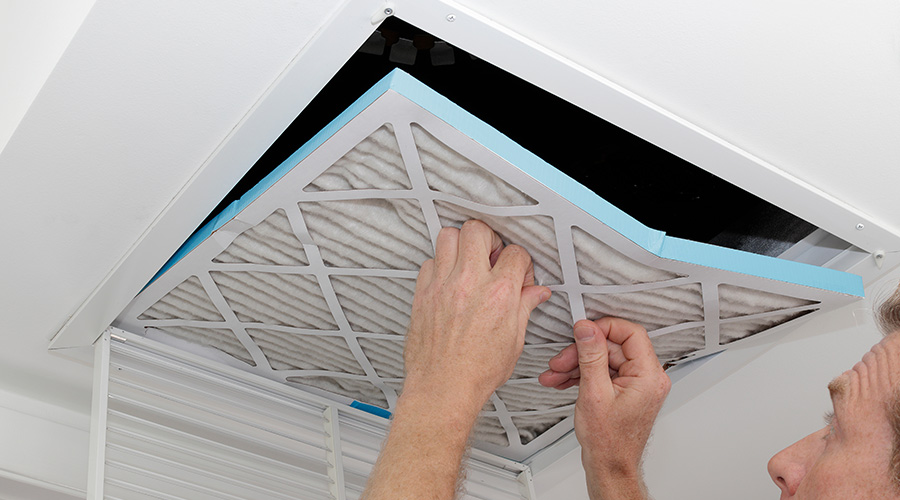Outlook
More and more, with AEDs, the law is on your side
Facility executives faced with complex legal issues involving lease negotiations, tenant liabilities and manufacturer warranties, take heart: Deciding whether to purchase an automated external defibrillation device to limit legal liability is getting easier.
Although there have been relatively few court cases involving AEDs in facilities, those that have occurred indicate facilities are better off with than without the medical devices.
“AEDs are becoming an unofficial standard of care,” says Sandy Lovett, a senior AED associate with the American Red Cross. “The debate isn’t about what happens if you have an AED and use it improperly, but what happens if you don’t have an AED at all.”
Gaining attention
AEDs have garnered much public attention as their effectiveness becomes better known. Sudden cardiac arrest strikes nearly 350,000 people annually in the United States. Using an AED within the first two minutes of cardiac arrest improves the victim’s chances of survival by 90 percent. For each minute that passes, chances of survival decrease 7 to 10 percent. Manufacturers have sold hundreds of thousands of AEDs since developing devices that can be used by laypersons a little more than a decade ago. Some estimates indicate the market for AEDs doubles every 18 months.
Despite the popularity of the devices, which until recently were required only for health care organizations and airlines, some organizations are reluctant to purchase AEDs because they fear that increased liability will come with owning a device.
The reality, however, is that there are few cases of either users or their employers being sued for using an AED or for administering an AED safety program improperly, says Lisa Berns, an attorney with the law firm Tueth, Keeney, Cooper Mohan & Jackstadt in St. Louis. Most cases arise because an organization didn’t have an AED in the first place.
One such case is a wrongful death suit involving Busch Gardens, a Florida theme park. The family of a 13-year-old girl filed suit after the girl died of cardiac arrest following a roller coaster ride. The jury awarded a half-million dollars in damages, in large part because the park didn’t have an AED. In another case, a Florida health club settled a suit for $2.25 million after a 42-year-old male suffered cardiac arrest at the club and fell into a coma. The club had no AED on site.
The growing opinion among legal experts is that organizations put themselves at greater risk by not having AEDs or AED programs at their facilities. Court opinions have shifted over the past few years to limit the liability facing organizations that have AEDs in place. Some states even require the defibrillation equipment.
States that approved legislation that takes effect this year include New York, Rhode Island and Louisiana. Illinois’ law takes effect Jan. 1, 2006. The Pennsylvania legislature has considered a law requiring the equipment at health clubs. Other states with legislation pending include New Jersey and Michigan.
Legislative impact
The legislative activity has most legal experts advising clients to be prepared to implement AED programs once their states pass legislation. Although health clubs, schools and government buildings are the primary facility types likely to be named in any legislation requiring AEDs, any facility with a significant number of occupants or with a high volume of public traffic could be subject to new laws.
“I think the easier AEDs get to use, the more common they become,” Berns says. “I would not be surprised if courts come down and decide organizations are liable if they don’t have AEDs.”
The documented effectiveness of AEDs is part of what’s behind the American Red Cross’ AED training and awareness efforts. The Red Cross would like to have AEDs positioned in facilities so that no cardiac arrest victim goes longer than four minutes without receiving care, says Lovett of the Red Cross.
Changes in AED program requirements and expenses are helping achieve that goal. The costs of individual units have dropped by more than half over the past 10 years. Training providers and evaluators have become more efficient. Medical professionals have fine-tuned medical oversight of facility AED programs so they operate as effectively as possible.
The one requirement that hasn’t yet changed for commercial AEDs is the requirement that a prescription be written to allow a facility to purchase an AED and implement a program. However, the FDA’s decision to allow use of AEDs at home without a prescription has allowed some units to be sold into commercial buildings without a prescription.
At least one defibrillator manufacturer is marketing an AED for over-the-counter sale to commercial users. No prescription is required because the technology used in the commercial version of the AED is identical to the technology used in the home version. The FDA has not approved the sale of commercial AEDs using different technologies than those already approved in residential units without a prescription.
Setting up programs
Establishing and maintaining an AED training program is critical not only for the safety of building occupants, but also to protect an organization legally. Although the general legal consensus is that organizations decrease liability by having AEDs available in their facilities, the possibility of facing lawsuits for negligence still exists.
Under the federal Cardiac Arrest Survival Act, rescuers in all states and the District of Columbia who use an AED on a cardiac arrest victim are afforded protection under Good Samaritan laws. That protection, however, doesn’t always extend to the organization that purchased the AED or to the person that oversees an organization’s AED program, Berns says. And the level of protection offered varies based on negligence standards used in different states.
Twenty-five states and the District of Columbia extend protection to all involved with AEDs — including the organization that bought the unit, the medical professional who prescribed the unit and AED trainers. Remaining states offer protection to various people, with some granting immunity to organizations that bought the unit but not to AED trainers. Others grant immunity for trainers and medical professionals but not to the organization that bought the unit.
The level of protection afforded under a state’s negligence laws could affect the level of training AED users receive as well as the diligence an organization exhibits in keeping an AED program up-to-date. Lovett of the Red Cross says states that grant organizations immunity generally spell out in Good Samaritan laws the number of training hours required and the number of people that should be trained.
The Red Cross recommends that any organization implementing an AED program consider the age and medical condition of building occupants, as well as the layout and size of a facility, Lovett says. A large building might need more than one AED. The organization should plan on training occupants in cardiopulmonary resuscitation (CPR). Although AEDs talk users through a rescue — advising when to place AED pads on the victims chest and when to deliver a shock — one of the instructions an AED might call for is to begin CPR.
“Setting up a defibrillation program is like setting up a disaster recovery program,” Lovett says. “If the program is not implemented properly, people won’t know what they’re supposed to do.”

Related Topics:












